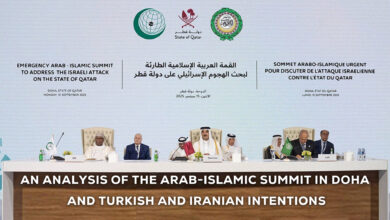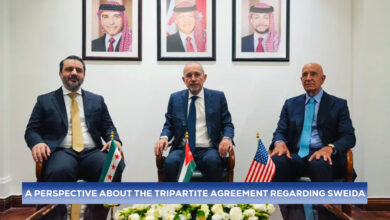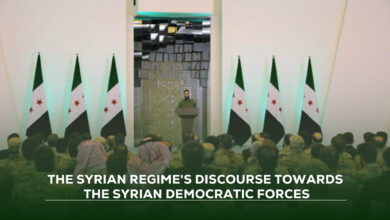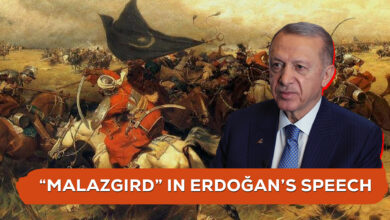Agreement of March 10th: An Opportunity for Stability, or the Risk of Failure”
Article by: Walid al-Sheikh
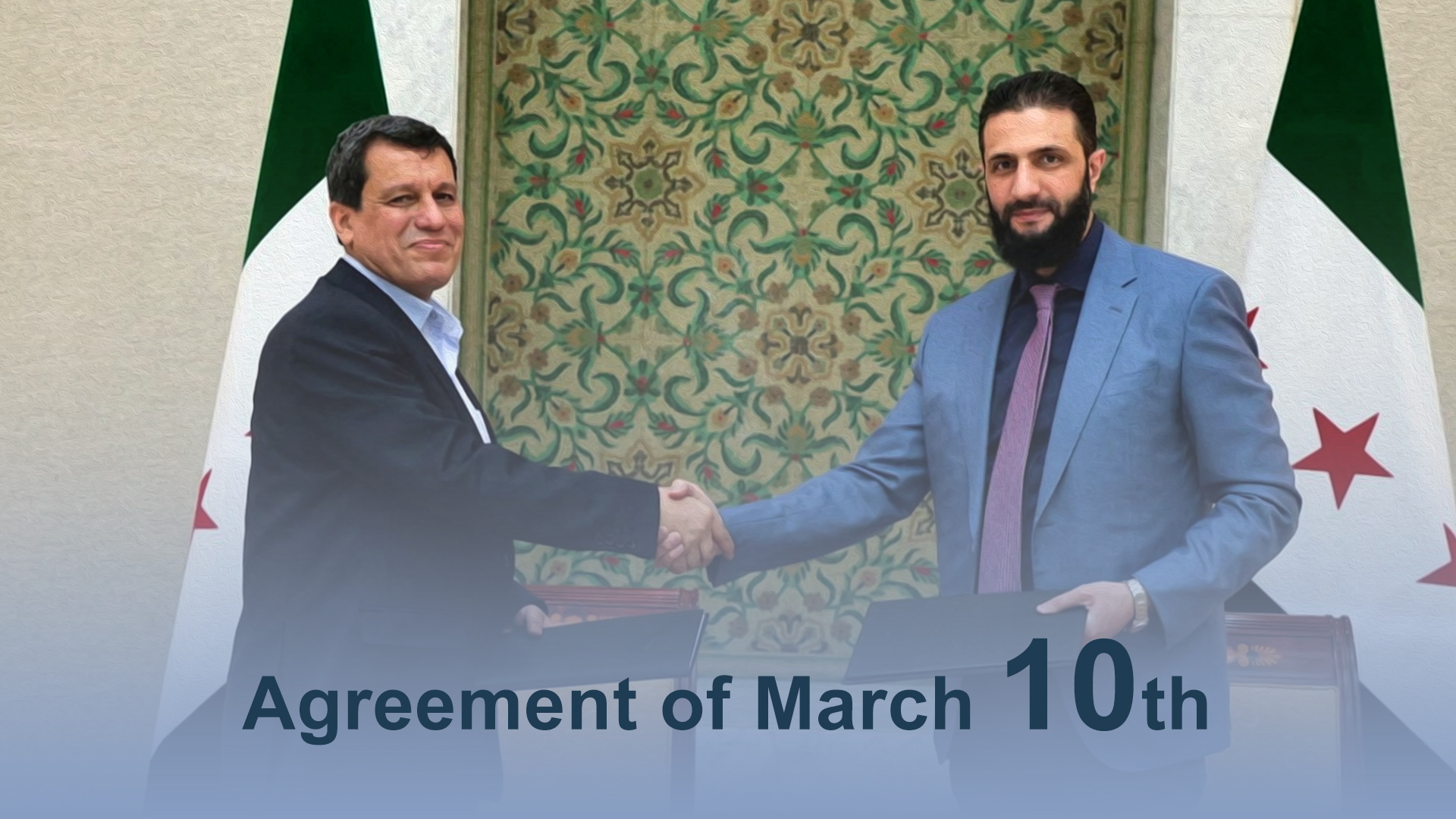
After a full decade of war and chaos, Syria is experiencing a pivotal phase that requires a re-evaluation of the foundations of the state and security. The nature of the relationship between weapons and legitimacy. The multiplicity of armed forces and field divisions has left deep influence on society, leading to an accumulation of violations and a loss of trust between citizens and institutions. In this context, the March 10 agreement stands out as a rare opportunity to unite military forces within a single national framework, putting an end to a decade of war and establishing a sustainable peaceful path.
However, achieving this integration is not a simple matter. It intersects with the experiences of the forces active on the ground, especially the Syrian Democratic Forces (SDF), which have gained unique experience in combating terrorism and managing local security over many years, and with influential regional and international factors, foremost among them the Turkish role, which seeks to hinder any unification process.
There are fundamental questions about the possibility of unifying weapons, the role of the SDF in security and stability, the obstacles facing the implementation of the March 10 agreement, and the conception of the ideal vision for integrating the SDF within the structure of the Syrian state in a fair and sustainable manner.
Can Syria write a new chapter in its history without unifying weapons under a single national banner?
And can a military force born out of war, such as the Syrian Democratic Forces (SDF), transform from a de facto force into a pillar of the state project?
Then, will this transformation be allowed to happen in the first place, given the entanglement of regional interests, foremost among them the Turkish role that obstructs any unification process?
These three questions are not theoretical or emotional, but rather summarize the essence of the Syrian conflict in its current stage: Who owns the power? Who owns the legitimacy? And who makes the decision?
For more than a decade, Syria has been going through a period in which allegiances and supporting parties intersect factions supported from abroad, others linked to local centers of power, and leaders of the defunct regime forces in their old structure still making threats here and there despite changing circumstances. This multiplicity has not been a positive diversity, but rather a burden on the idea of the state; as it has made weapons a tool for negotiation rather than protection, and geographical areas of influence, not citizenship.
Therefore, the unification of military forces has become a condition for building any new social contract, because the state is not based on a multiplicity of guns, but on their integration into a single structure that has the decision of war and peace according to the law, not loyalty.
The experiences of post-conflict countries, from Bosnia to Lebanon, confirm that sustainable peace is only achieved when armed formations are integrated into a national institution agreed upon its doctrine, not when each party keeps its weapons “As a precaution”. In Syria, the Syrian Democratic Forces represent one of the most important keys to this transformation; because they are the force that has accumulated real field legitimacy that did not come from a political decision but from field sacrifices, starting with the Battle of Kobani in 2014, which constituted a turning point in the confrontation with ISIS, passing through the liberation of Manbij, Raqqa, and Deir Ezzor, and ending with the ongoing operations to pursue sleeper cells that are still continuing today.
The Syrian Democratic Forces (SDF) have not only fought but also established a comprehensive security structure, including the Asayish forces and counter-terrorism units. These bodies have gained rare organizational experience amidst the chaos of war. This cohesion makes them fundamentally different from most armed factions in other regions, which have fought among themselves for power and gains and committed violations documented by numerous human rights reports, especially in the northwestern regions, where factions have become intertwined and transformed into tools in the hands of external powers. This was reflected in the events of the coast and Suwayda, which caused a significant rift in Syrian society and an open wound that would not have occurred with a little professionalism from the Syrian army and its officers.
What makes the role of the Syrian Democratic Forces exceptional is that they have managed to be both a security and community force. They have dealt with a multi-ethnic environment (Kurds, Arabs, Syriacs, Assyrians) and maintained a delicate balance between security necessities and the needs of the local population.
The call today for the integration of the Syrian Democratic Forces, according to the March 10 agreement, does not mean disarming or dismantling them, but rather rehabilitating this weapon within a modern national system. The efficiency that these forces have gained during their war against terrorism cannot be compensated for, and it represents rare practical experience in the field of combating extremist organizations. Furthermore, their possession of effective intelligence and operational networks makes them an indispensable part of any future national security structure.
But the painful irony is that the Syrian Democratic Forces are being punished today for their efficiency. Instead of being rewarded for their role in protecting eastern Euphrates from chaos, they face continuous attempts to marginalize or diminish them politically. This contradiction brings to mind previous experiences in the contemporary history of Syria, when forces active on the ground were excluded from the political scene, perpetuating the state of imbalance that has repeatedly ignited conflicts.
Turkey: The Obstructive Factor and the Expected Spiral
Turkey has sought by all means to thwart the March 10 agreement, or (the integration of the Syrian Democratic Forces with the Syrian army – but in its own way – i.e., disarmament and integration as individuals, not as a military bloc), whether through direct military pressure (through repeated bombardment of the Autonomous Administration areas), or through the indirect mobilization of its factions in northern Syria to create a state of tension that prevents any unification path.
Turkey’s success in disrupting this path does not only mean undermining the agreement, but also returning Syria to square one, where a new cycle of clashes may erupt, returning the country to a scene of chaos and widespread violations; and any collapse of the integration process will mean the loss of a historic opportunity to unify the security geography, as well as weaken the position of the interim government before the international community, which is monitoring the extent to which the Syrian interim government is able to manage internal disputes without guardianship or fighting.
Considering these circumstances, the strategic question becomes: Does the interim government have the courage and sufficient vision to sign a real security partnership with the Syrian Democratic Forces despite Turkish objections?
A positive answer to this question will determine whether Syria is moving towards a comprehensive national state, or whether it is heading towards reproducing the torn maps with new names.
The ideal vision for the integration of the Syrian Democratic Forces is not based on dissolution, but on recognition and institutionalization; recognition of its sacrifices and experience is a psychological and political condition for building trust, and it can be achieved by reformulating it as a basic structure for rebuilding the new Syrian army. The integration must be carried out according to clear criteria, ensuring fair representation for all in the army and security institutions, and establishing a national doctrine that transcends ethnic or regional affiliations.
The integration process must be accompanied by parallel political steps, such as involving civil councils in monitoring security agencies, adopting accountability mechanisms for perpetrators of violations regardless of their affiliation, and activating programs to revitalize civic life. In addition, the experiences of the Syrian Democratic Forces can be utilized to establish a national counter-terrorism school, which would be a nucleus for building new capabilities within the military institution.
These steps do not end the disputes, but they establish a fair security partnership that restores the Syrians’ confidence that the coming state is not a state of victor and vanquished, but a state of partners in blood and destiny.
The March 10 agreement is not just a political document, but an opportunity to re-engineering the Syrian scene. If this agreement is not translated into a realistic integration vision that recognizes competence and frames weapons within a national institution, Syria will remain captive to the equation of weapons without legitimacy, and legitimacy without power.
The opportunity still exists, but time is not on anyone’s side. Either integration will be an entry point to a lasting peace that honors the sacrifices of all, or the war will continue to write the fate of Syrians at the hands of others.

